- Student author: @auggest_crypto
- Supervising teachers: @CryptoScottETH, @ZouBlock
- Initial release date: 2024.2.28

- Mobile Network is Helium's mobile network business. The DePIN track where Helium is located is currently very popular, especially in the field of wireless communication, which has optimistic market potential. Mobile networks account for 70% of the annual revenue of wireless communication and are the main source of market revenue. Therefore, from the perspective of development tracks, the track to which Mobile Network belongs itself has enormous development potential and high profitability.
- In April 2023, Helium officially completed its migration to Solana, reducing operating costs while leveraging Solana's strong growth and rich ecosystem to bring more user traffic and development space to Mobile Network. The incentives from Saga phones in the Solana ecosystem and the Mapping mining mechanism have attracted continuous user influx, indirectly stimulating the expansion of Mobile Network's user base.
- Mobile Network currently occupies nearly 90% of the usage rate of the Helium network, with a total daily consumption of $2K in DC to meet network usage demands at the time of writing. The current operational data is good, as it is able to meet strong user demand coverage despite the insufficient number of hotspots and the short launch time compared to IoT networks.
- Mobile Network has the characteristics of low threshold and high coverage, which can stimulate buying pressure for tokens and encourage participation on the supply side, thus forming a positive cycle. This makes $MOBILE likely to become a strong promoter for Helium to establish user awareness.


Mobile Network, which is under Helium, is a decentralized wireless network. It mainly consists of two main businesses: the Internet of Things (IoT) Network ($IOT) and the 5G Mobile Network ($MOBILE).
Helium delivers network deployment to users worldwide (People-Powered Networks), providing open and extensive global wireless network coverage for LoRaWAN standard IoT devices and cellular data standard 5G networks through Hotspots. Any user with compatible hotspot devices can deploy hotspots to build the network and receive certain mining incentives.
Mobile Network is the mobile network business within the Helium wireless network. Users need to purchase 5G Hotspots and connect CBRS Radios to achieve regional network coverage. Helium network incentivizes these providers with $MOBILE tokens, dispersing network infrastructure to various parts of the world in a low-cost and extensive manner through crowdsourcing the construction of a powerful 5G network.

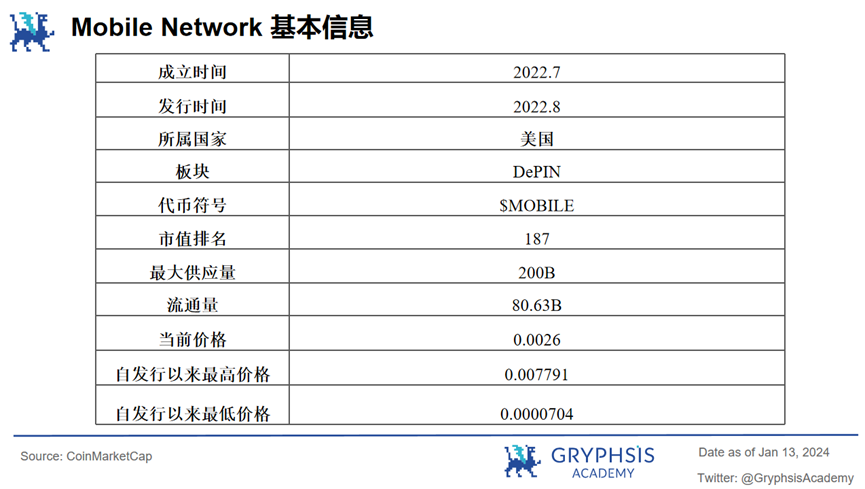


The team reached a peak of over 100 employees in 2021, with an average tenure of nearly 3 years, and currently has 11-50 employees.
Abhay Kumar (CEO): Abhay has been involved in the Helium community since 2019, released the first HIP in the summer of 2020, and joined the core development team of Nova Labs in the fall of 2020 as the Chief Product Officer.
Scott Sigel (COO): Scott is the Chief Operating Officer of Helium and previously served as Senior Vice President at Silicon Valley Bank. He has closely collaborated with startups, supporting their growth, financials, and management. He has also pioneered new projects such as API banking, service innovation, and product design with the internal R&D team.
Amir Haleem (Founder): Amir is the CEO of Helium Mobile and co-founder of Helium. Before joining Helium, Amir had a long career in the video game industry, serving as the Chief Technology Officer of the game startup Diversion and as a member of the original team of "Battlefield 1942" at DICE in Stockholm, Sweden. In his spare time, Amir is a former world champion esports player and co-founder of the popular esports community esreality.com.

Helium has completed a total of 5 rounds of financing, with a total financing amount of 253.8M. The Mobile Network subnet has not yet been financed.
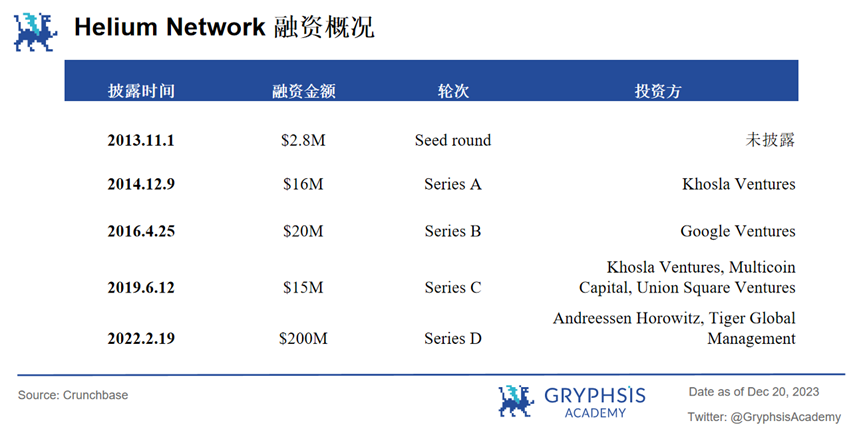


Helium 5G Hotspots provide cellular coverage using CBRS (Citizens Broadband Radio Service). CBRS is provided by operators, and Mobile Network collaborates with operators to enable them to provide/support Mobile network connectivity deployment.
CBRS is generally divided into indoor and outdoor categories. The purchased hotspot devices can connect to indoor or outdoor CBRS cellular radio stations, and after connection, they can provide indoor or outdoor networks accordingly.
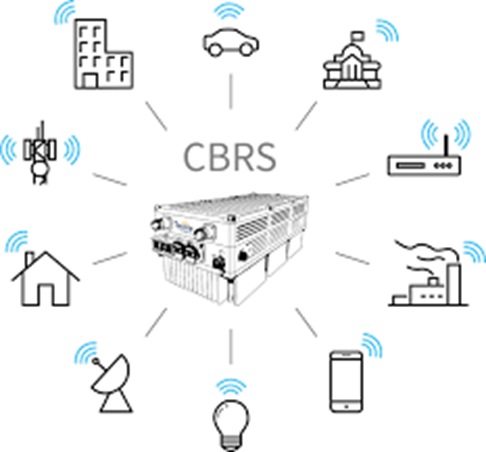
Source: tecore.com
However, users need to ensure that their 5G hotspot is certified by the operator cooperation partner FreedomFi for CBRS radio connection. Otherwise, even if connected, they will not be able to provide network coverage for Mobile Network and will not receive mining incentives.

Proof of Coverage (POC) is used to verify whether the hotspot provider accurately represents its location, configuration, and created wireless coverage area. POC encourages operators to deploy in underserved areas and accurately report their deployments so that users can see the available coverage areas.
At the beginning of its creation, 5G operators only needed to keep the radio online to receive rewards. To make the network more reliable and available, Mobile Network introduced Modeled Coverage, a POC proof different from other subnetworks.
By introducing more data sources such as partition and population density to ensure the effectiveness of coverage and incentivize operators to deploy in important areas. In Mobile Network, hexagons are used to determine the location and quantity of hotspots within a given hexagon, thereby determining the coverage area's location and rewarding the radios deployed in the optimal location.
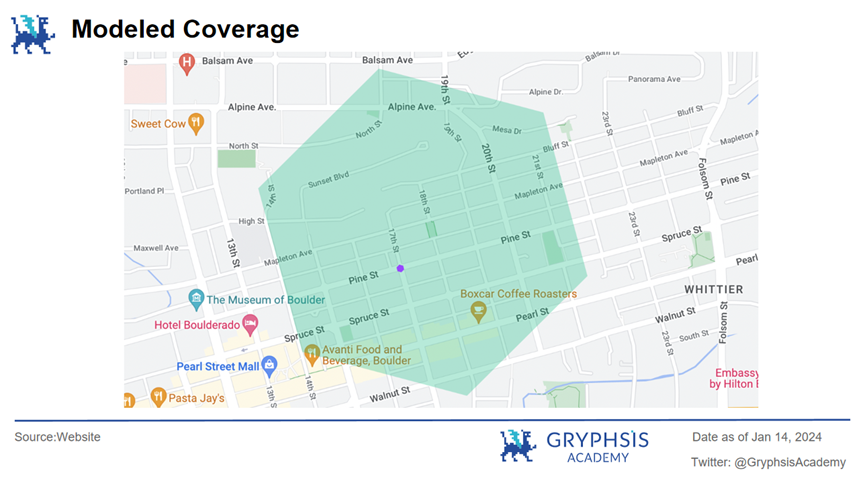

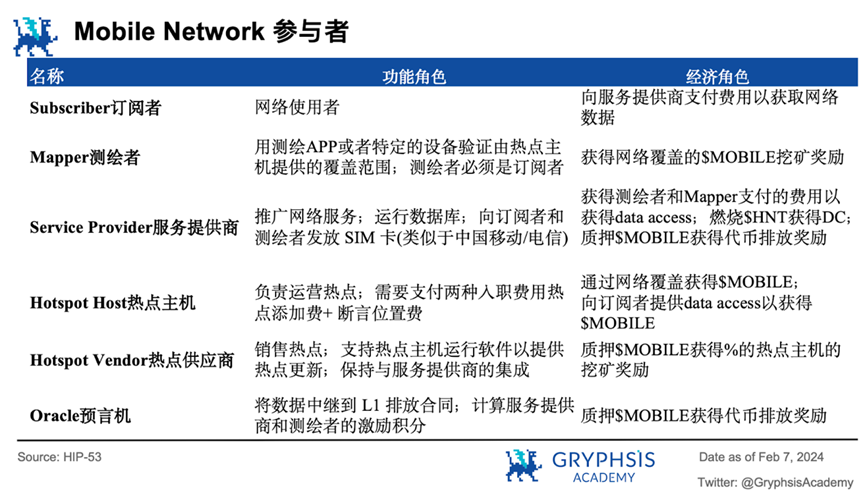
The main components of Mobile Network are subscribers, mappers, service providers, hotspot hosts, hotspot suppliers, and oracles. Service providers, hotspot suppliers, and oracles must stake a certain amount of $MOBILE tokens and receive staking rewards to participate in the network.
Hotspot suppliers: must hold at least 50M $MOBILE; Service providers: must hold at least 500M $MOBILE. Service providers are allowed/encouraged to use the $MOBILE emission pool they receive to increase their subscriber base. Mobile Network also provides service providers with a 20% network $MOBILE emission incentive to attract users to participate in the Helium 5G network for rewards.
Helium Mobile (mobile subscription service) is one of the service providers, incentivizing users to participate in network coverage construction through an innovative mobile operator model, thereby reducing costs and increasing revenue using cryptoeconomics.
Below is a brief workflow of Mobile Network: Mappers verify the coverage of the hotspot operators to obtain POC rewards; operators will receive network incentives after successful verification; Mobile Network is used by service providers to attract more people to use the network through operational incentives.
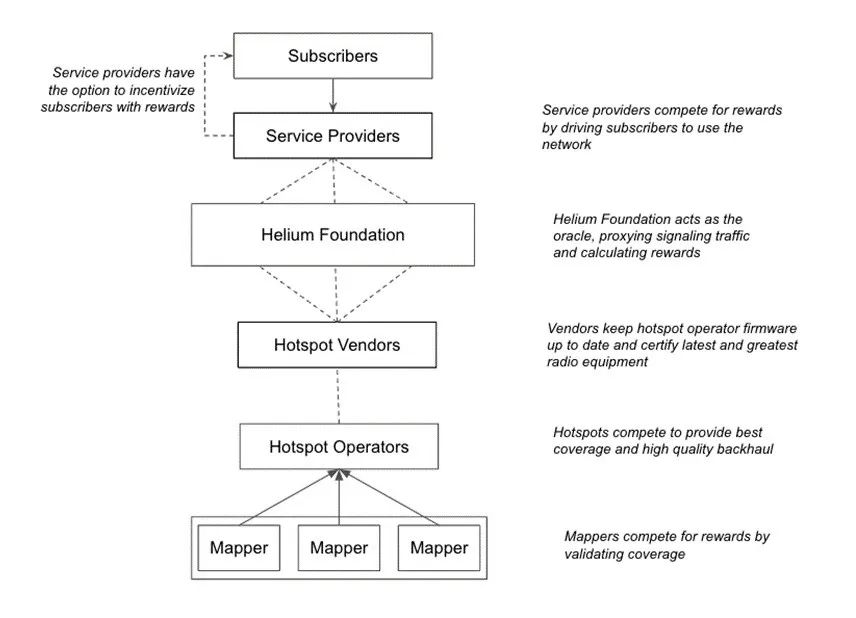
Source: Official Doc

Helium Mobile Network is a subnetwork of Helium, focusing on achieving 5G network coverage. Users need to purchase 5G Hotspots and CBRS Radios to achieve regional network coverage.
Mobile Network allows users to provide networks by purchasing dedicated hotspot devices. Devices can be purchased from large hotspot operators currently collaborating with Mobile, such as Bobcat, Calchip, FreedomFi, and others.
To use the Mobile network as a consumer, one can purchase network operator services such as FreedomFi's SIM card to access the Helium 5G network. Network fees are paid by burning $MOBILE for data credits (DC).
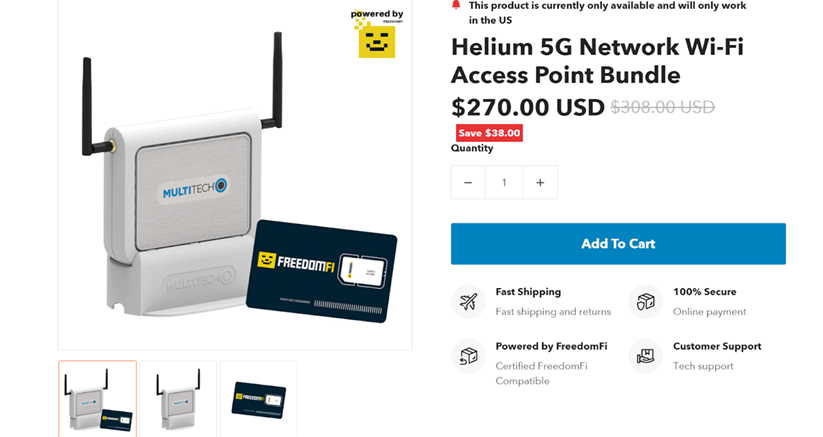
Source: FreedomFi Website
In addition, Helium has launched its own mobile subscription revenue service, Helium Mobile, nationwide, built on the Helium Network and launched on Saga (Solana blockchain). This allows users to earn encrypted tokens through daily usage of wireless phone services and is currently being piloted in Miami.
Helium Mobile subscribers can earn $MOBILE rewards through "Mapping for Helium." The "Discovery Mapping" section allows users to understand which areas have achieved coverage by sharing their location. Therefore, "Mapping" can be understood as enhancing the Helium Mobile Network by authorizing the collection of location information and helping Helium discover ideal locations for deploying new network coverage. In return, users can earn $MOBILE tokens and use the earned $MOBILE to pay for monthly subscriptions.
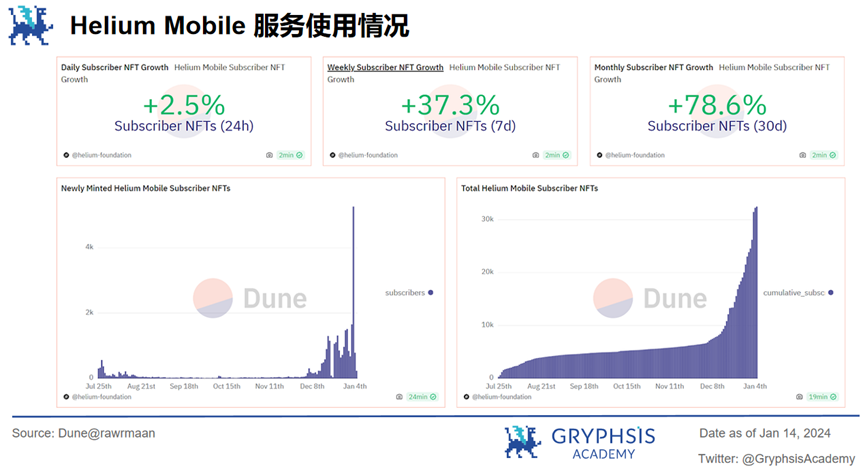
Since the launch of Helium Mobile services, there are currently 7256 online CBRS Radios deployed in the United States, and the total number of users is continuously increasing, especially since December, with a sharp increase in daily new subscribers. The daily average has grown from tens to hundreds and remained stable. At the time of writing, 37.6K users have registered for Helium Mobile, entering the expansion of the Mobile network. Whether it's daily, in the past 7 days, or in the past month, the number of users in the Mobile Network is growing optimistically.
In addition, Helium Mobile uses eSIM instead of SIM cards, making it faster and more convenient to integrate into users' daily lives.
A SIM card, short for Subscriber Identity Module, contains your phone number, identity, location information, and security passwords. When you purchase a SIM card from a telecommunications service provider, you need to buy the provider's service package. For example, if you buy a SIM card from China Mobile, you can only choose from the Mobile package.
An eSIM card is an embedded SIM card, similar to a SIM card, but cannot be physically removed. It is embedded in the mobile device and can be activated by scanning a QR code or manually entering the information provided by the mobile network provider.

If a user wants to switch service providers, they need to purchase a new SIM card. However, eSIM cards are programmable and can easily activate cellular networks, add new numbers, and switch service providers without the need to purchase a new physical SIM card.
Therefore, Helium Mobile's use of eSIM reduces user operating costs and enables rapid network penetration.


- July 1, 2013: Helium Network officially launched by Helium.Inc
- January 1, 2017: Helium decided to use blockchain protocol
- July 29, 2019: The first $HNT was produced
- August 12, 2020: DC (Data Credits) officially launched, requiring users and hotspots to pay
- November 20, 2020: Introduced halving, net emissions, and maximum supply mechanisms to maintain $HNT
- February 12, 2021: Helium introduced validators and corresponding POS staking mechanisms to maintain network security
- February 23, 2021: Provided 1M $HNT for the DeWi Grant project
- July 27, 2021: Helium Network reached 100K global hotspot coverage
- February 19, 2022: Helium.Inc renamed to Nova Labs Inc
- May 6, 2022: Light HotSpot officially launched, transferring data storage tasks to validators
- June 8, 2022: Support Networks of Networks, allowing other networks to deploy into the Helium ecosystem
- July 13, 2022: Launched Helium Mobile Network, achieving 5G network coverage and $MOBILE mining
- September 20, 2022: Partnered with T-Mobile, a US telecommunications giant, for a pilot launch in the United States
- September 26, 2022: HIP70 proposal passed, deciding to migrate to the Solana network
- April 18, 2023: Helium Network completed the migration
- December 6, 2023: Launched Helium Mobile phone plan subscription service
- January 25, 2024: Partnered with Telefónica, a telecommunications service provider, to deploy hotspots in Mexico


According to the Helium Hotspots Map, as of December 20, 2023, the Helium Network currently has 4237 active 5G hotspots. Hotspot operators are mainly concentrated in the United States, Europe, and some parts of China.
In the past month, Helium's daily network usage has been on the rise, consuming approximately 12K worth of DC for network usage on average per day. Nearly 80% of the consumed DC is obtained through burning $HNT (Helium Network's native token), while the proportion of $MOBILE and $IOT burned to exchange for DC is not high.
However, the amount of $MOBILE burned is still more than 10 times that of $IOT, indicating that the demand for Mobile network usage is greater than that of the IoT network, and its network revenue (obtained DC) is more substantial.
From the perspective of Helium network usage, the Utility Score of the Mobile Network (used to measure the $HNT each Subnetwork can obtain) is relatively high, resulting in a high emission of $HNT.
The use cases of the Mobile Network occupy nearly 90% of the entire Helium network, with a daily network consumption of around $2K, which is more than 5 times that of the IoT (Internet of Things) network. However, its active hotspots are only 1/50 of the IoT network. Comparatively, the deployment of Mobile hotspots is less, but the network usage rate is very ideal.
According to Solscan data, the number of holding addresses has tripled since early December, soaring from around 15K to 45K. Active addresses account for 5% of the total holding addresses. The top 10 addresses holding $MOBILE on-chain (all above 1%) account for 42.18%, while the remaining addresses holding the token account for 57.2%. The token distribution is relatively concentrated, with large holdings by whales.
In 2022, Helium Mobile established a long-term partnership with T-Mobile, one of the key players in the US 5G field, marking its significant position in the mobile network. Additionally, network providers such as FreedomFi, Dish, GIGSKY, Bobcat, Mosolabs, and others are participating in the construction of the Helium Mobile Network to provide network coverage.
Furthermore, suppliers like FreedomFi are helping users better connect to and use the Helium 5G network by launching the Helium 5G series products. Users can purchase standard-compliant devices to participate in the network construction of the Mobile Network.
On January 25, 2024, leading global telecommunications provider Telefónica announced a collaboration with Nova Labs to deploy Helium Mobile hotspots in Mexico City and Oaxaca. These hotspots utilize the cryptocurrency-based Helium 5G network, allowing Telefónica to offload its mobile data traffic to Helium Mobile and expand its coverage in Mexico.
Currently, Telefónica is the first major wireless operator in Mexico to directly offer Helium Mobile hardware, and the company claims to have approximately 383 million customers in Europe and Latin America.
It is evident that from the United States to Mexico, the Helium Mobile Network is continuously expanding its business footprint in the international market. Additionally, since every service provider and hotspot operator participating in the Mobile network needs to stake a large amount of $MOBILE, it indirectly restricts the token circulation, effectively stabilizing/raising the token price.
The original token of the Helium network is $HNT, the native token of the IoT Network is $IOT, and the native token of the Mobile Network is $MOBILE.
All Helium subnetwork tokens are supported by $HNT, so the Helium mainnet will allocate a certain amount of $HNT based on the Utility Score of each subnetwork. Both $IOT and $MOBILE can be exchanged for $HNT in the Helium Wallet.
Data Credits (DC) are USD-anchored fuel tokens, with a constant price of 0.00001 USD per DC, and can only be obtained by burning $HNT. DC usage scenarios include adding hotspots, executing hotspot addition transaction fees, asserting location, and executing location assertion transaction fees.
All transactions are recorded on-chain and require the consumption of DC. When users need it, the wallet will automatically burn an equivalent amount of native network tokens to generate DC and use it.
The native tokens primarily provide value to the supply side of the network, while DC provides value to the demand consumption side of the network.
As for why native tokens like $MOBILE are not directly used as network consumption tokens to expand the token's consumption scenarios, it is understood that when the market is bearish and native tokens are used as consumption tokens, there is a risk of high token circulation and low demand, leading to a token price decline. This, in turn, affects the operators' earnings, reduces their participation, and results in a gradual decline in network coverage and maintenance, ultimately leading to a vicious cycle.
However, due to the stable price of DC, even in the aforementioned bearish market situation, both the supply and demand sides can exchange tokens for DC to preserve assets, or even engage in arbitrage. For example, during a market downturn, converting DC into a large amount of $MOBILE and then exchanging it back into DC when the price rebounds. This effectively acts as a stablecoin, mitigating the negative effects of market fluctuations.
Users of the IoT and Mobile networks need to exchange $IOT, $MOBILE tokens into $HNT in the Helium Wallet App, then burn $HNT to exchange for DC. Subnetwork tokens like $MOBILE do not have a burning scenario themselves.

$MOBILE is the token of the Helium Mobile Network, with a total supply cap of 230 billion. 50 billion of which were pre-allocated at the launch of the Mobile Network. $MOBILE adopts an emission reduction mechanism, with the specific rules as follows:
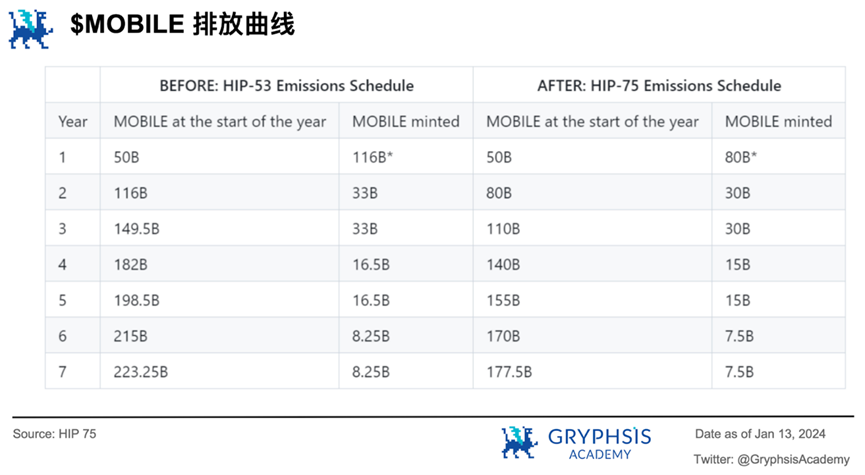
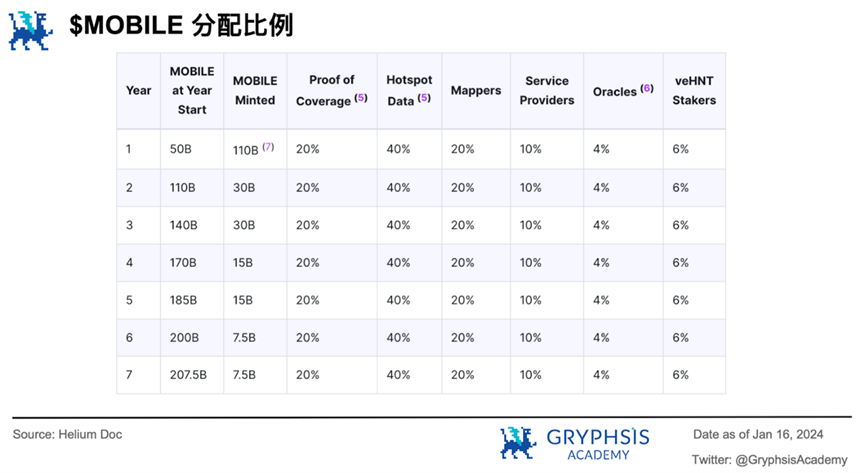
The emission of $MOBILE is mainly allocated to nodes supporting Proof of Coverage (POC), 5G hotspot holders, mappers (Helium Mobile), service providers, oracles, and veHNT stakers. All allocation ratios (temporarily) do not change with the reduction mechanism and are mainly allocated to 5G hotspot holders, providing strong incentives.
Main Sources of Acquisition:
- Network participants: including hotspot providers for POC coverage incentives, validators…
- Helium Mobile: Mappers who subscribe to the service
- Network staking rewards: Validators maintain network security and earn rewards by staking $MOBILE
Main Consumption Scenarios:
- Onboard Fee
- Payment for Helium Mobile subscription services: Direct payment using earned $MOBILE
In order to increase the Utility Score of the Mobile Network, which measures network efficiency and also determines the emission ratio of $HNT (Helium Network native token) for each subDAO.
HIP53 formally introduced Onboarding Fees, aiming to charge a startup fee for each hotspot host, mainly including Hotspot Addition Fee and Assert Location Fee. In HIP96, Onboarding Fees were updated to standardize the entry fee structure for network participants, and Assert Location Fee was removed in HIP97.
- Indoor WiFi AP: Total Onboarding Fee ($20), consumes 1M DC ($10 of $HNT) + $10 of $MOBILE
- Outdoor WiFi AP: Total Onboarding Fee ($30), consumes 1M DC ($10 of $HNT) + $10 of $HNT + $10 of $MOBILE
They are classified based on the level and type of different devices to meet the expanding demand. This further expands the consumption scenarios of $MOBILE and brings additional revenue to the entire Helium network, standardizing all subnetworks.

In addition to the above-mentioned consumption scenarios for $MOBILE, currently, the main benefit for users is governance voting. Users can stake tokens to obtain $veMOBILE, and $veMOBILE holders can propose and vote to implement network updates and governance.
$veMOBILE cannot be transferred, and governance rights are weighted based on the amount and time of $MOBILE locked by the user. The highest lockup of 4 years can obtain 100 times governance rights, while the lowest of 6 months can obtain 1 time governance rights.
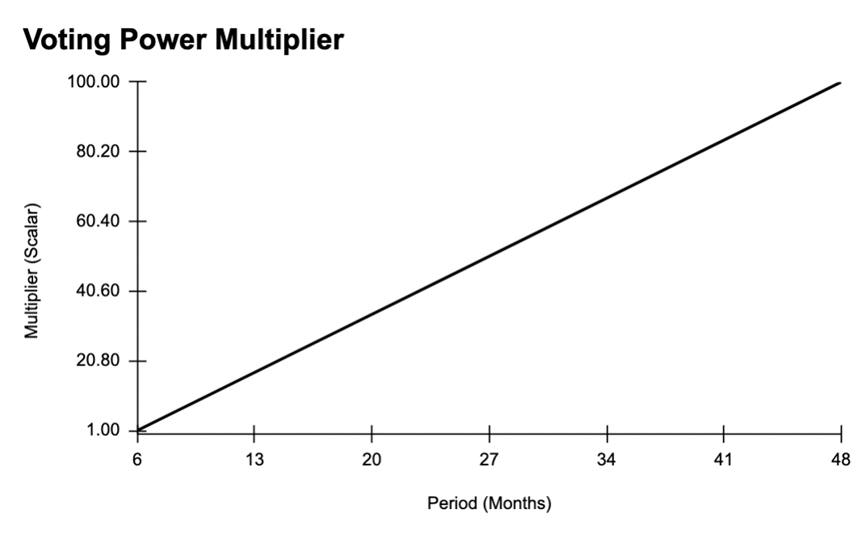


DePIN (Decentralized Physical Infrastructure Network) is a decentralized physical infrastructure network that incentivizes users to share their idle resources, including space, communication bandwidth, storage, computing, etc., to build the infrastructure network.
In traditional information and communication technology fields, such as hardware, software, cloud computing, data storage, and communication technology, are to some extent monopolized by large institutions, leading to increased industry barriers and high competition thresholds for small and medium-sized enterprises, which is not conducive to the vigorous development of the industry.
DePIN, through a crowdsourcing model, allows any user with idle computing resources to participate in the construction of the infrastructure, lowering the threshold and expanding the service breadth from the bottom up, collectively building the physical infrastructure network. Currently, DePIN is mainly divided into three categories: computing & storage, software providers, and remote communication.
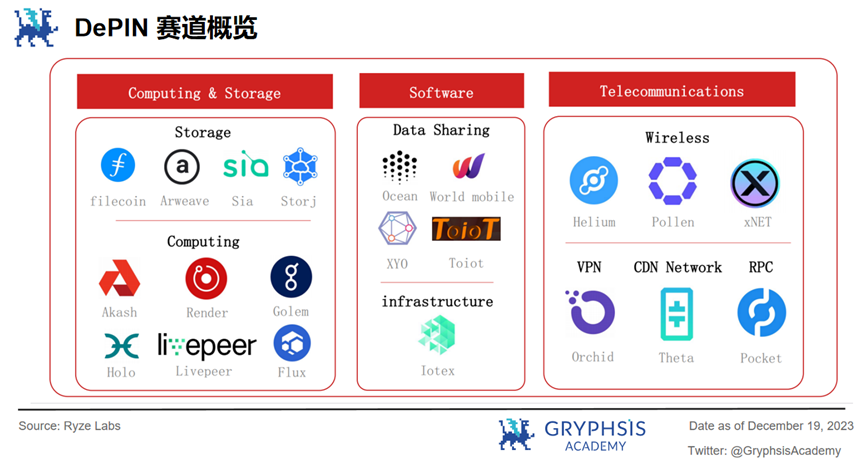
The Mobile Network belongs to the Wireless track of remote communication in the DePIN industry. According to a Messari report, the Wireless track is currently larger than the computing & storage market, with a compound annual growth rate of 30%-35% and no downward trend.
Global wireless annual revenue has reached 1.5 trillion+, with the Mobile Network occupying 70% of the market share. It is evident that the development prospects of Helium's own track are optimistic, and its Mobile Network is expected to become the main driving force for Helium's development.


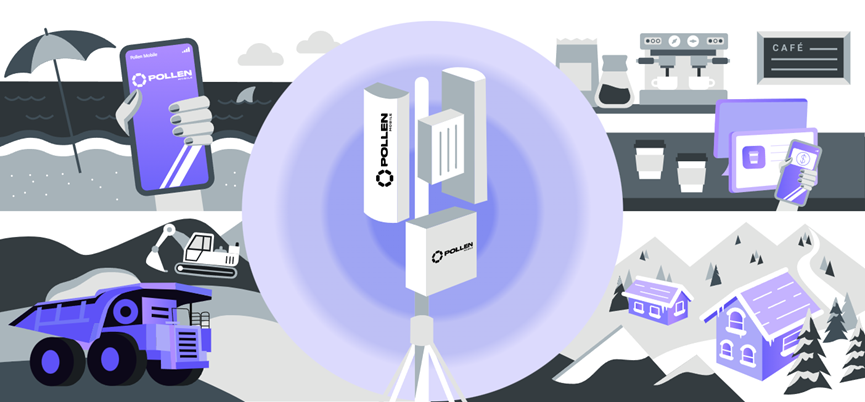
Pollen was launched in February 2022 with the aim of building a decentralized mobile network focused on privacy, anonymity, and freedom. It aims to disrupt the traditional centralized mobile network model by empowering users to build, own, and operate decentralized network infrastructure using blockchain, CBRS, and other open-source technologies.
The following is its workflow:
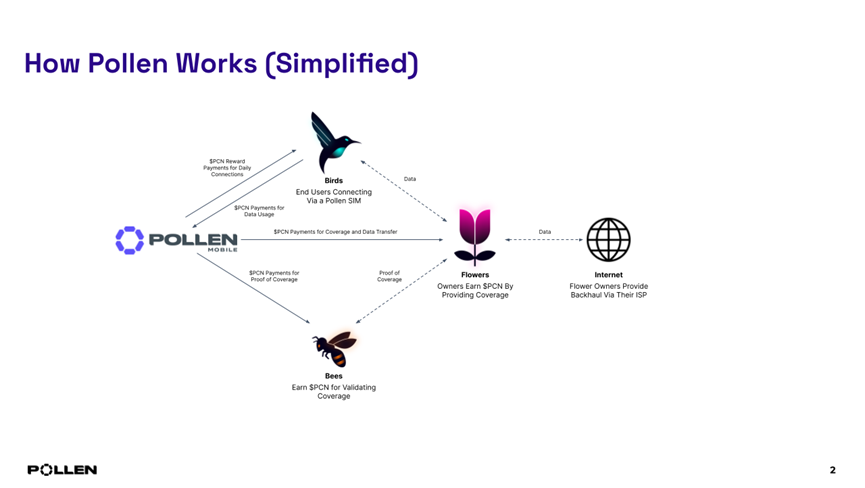
Network participants are mainly divided into the following parts:
- End users ("Birds"): End users use devices such as phones to connect to the Pollen network. Devices compatible with CBRS can download Pollen eSIM or purchase a SIM card to become a Bird and connect to the Pollen network.
- Validators ("Bees"): Bees verify the network coverage of Pollen and other networks by moving in the physical world and reporting coverage statistics, equivalent to Proof of Coverage (POC).
- Network providers ("Flowers"): Flowers provide network coverage through base stations/antennas and receive $PCN token incentives.
The native token of the Pollen Mobile network, $PCN, has a total supply cap of 1 billion and is mainly used for the following purposes:
1) Payments within the Pollen network (e.g., data subscriptions, hardware purchases, etc.) 2) Rewarding Flowers owners who provide network coverage 3) Rewarding validators who verify Flower coverage 4) Rewarding end users for using the network
Business categories & business models:
- Pollen Mobile Hybrid Network Operator ("MHNO"): Concentrated RAN deployment in areas lacking coverage by existing mobile network operators ("MNOs"); combined deployment of fixed radio and public/private network RAN; launching higher-quality services using existing MNO commercial agreements.
- Fixed wireless access/wireless internet service: Pollen will make it easy and affordable for anyone to deploy wireless internet access. Once deployed, Pollen installations using CBRS (and other mobile bands) will also be able to support mobile services, such as Pollen MHNO.
- Public/private hybrid network: Pollen aims to make it affordable for anyone - from individuals, to small and medium-sized enterprises, to the largest corporations - to deploy private networks at any scale.
- Pollen MHNO: Charging MNOs and mobile virtual network operators ("MVNOs").

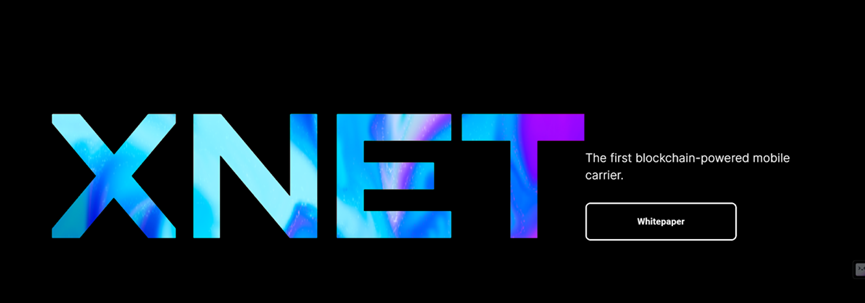
XNET is deployed on Polygon and uses blockchain technology, CBRS, and the network operator community to bring true mobile wireless 5G connectivity to consumers and businesses. XNET will use CBRS and any other available radio spectrum to modernize 4G and 5G wireless networks and own and operate wireless network infrastructure in the form of encrypted rewards.
Unlike Helium and other CBRS wireless radio competitors, XNET will provide full-service voice and data networks, operating as a true mobile network operator. In the simplified diagram below, three different types of XNET network nodes and a collection of network clients can be seen, including clients acting as XNET network validators, coordinating various nodes through public blockchain to act as a mobile network.

It has two tokens, the native token $XNET (with a total supply cap of 24 billion) and the network payment token $XNETD.
- $XNET: With a total supply cap of 24 billion, it is mainly used to incentivize network maintenance for nodes and validators.
- $XNETD: Can only be obtained by converting $XNET, it is used to obtain user payment for network interactions by burning existing $XNET, such as data or voice service fees.

We have made a simple comparison of the three, where Mobile and Pollen are both deployed on Solana, while xNET is deployed on Polygon. Currently, in the DePIN track, Solana is in a leading position; Mobile Network has a more diverse business line, in addition to basic 5G mobile network connectivity, it also has additional subscription services and Service Provider to accelerate network coverage and usage.
Pollen's token not only incentivizes network contributors but also incentivizes network users, including the network usage fees that users need to pay, which is $PCN, which is quite special. Helium and XNET both use the second-generation token as the network payment medium. In terms of network usage data, Mobile Network still holds a dominant position, with its hotspot operators and network usage far exceeding its competitors.
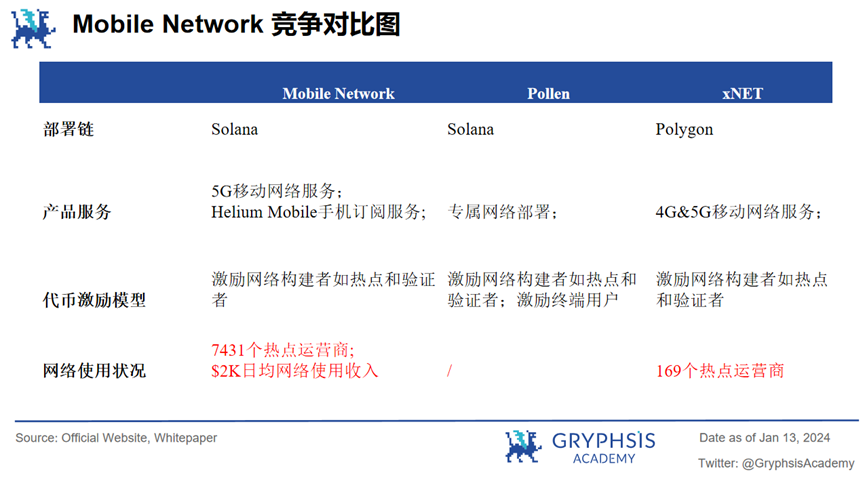

Advantages:
Solana Ecosystem Bonus: Currently, the strong momentum of the Solana ecosystem has brought many benefits to Helium. For example, with Solana's Saga phone, more and more projects are airdropping to users who hold the phone, further increasing demand and expanding the user base of the Mobile Network.
Low threshold and fast coverage efficiency of the Mobile network, involving very rigid daily needs of people. Therefore, although the Mobile network was launched later than the IoT network, the current network usage demand has far exceeded that of IoT. The Mobile Network has undoubtedly become a strong promoter for Helium to establish user awareness.
Rich ecological partners: Establishing partnerships with many leading operators to quickly deploy and expand business, which is conducive to consolidating industry position in advance.
Helium completed the concept verification of DePIN in the previous cycle and gained experience from the pitfalls, and is expected to step on "stones" to achieve new growth in the new cycle.
Disadvantages:
Multiple device restrictions increase the participation threshold: In Helium, users need to purchase compliant devices to participate, rather than contributing to the network with their idle resources. This has led to a period when the price of devices was inflated, and the operating costs of operators continued to increase.
Regulatory and legal risks: Due to the different regulatory policies affecting different blockchain networks, Helium's migration to the Solana network may bring new regulatory risks and legal requirements.
Disclaimer
This report is an original work completed by the student @auggestcrypto of @GryphsisAcademy, with modification suggestions from Gryphsis Academy mentors @CryptoScottETH and @Zou_Block. The author is solely responsible for all content, which does not necessarily reflect the views of Gryphsis Academy or the organization commissioning the report. Editorial content and decisions are not influenced by readers. Please note that the author may own the cryptocurrencies mentioned in this report. This document is for informational purposes only and should not be used as the basis for investment decisions. It is strongly recommended that you conduct your own research and consult with independent financial, tax, or legal advisors before making investment decisions. Please remember that past performance of any asset does not guarantee future returns.
References
[1] https://dune.com/browse/dashboards?q=mobile
[2] https://www.eet-china.com/mp/a178074.html
[3] https://heliumchina.gitbook.io/helium/
[4] https://docs.helium.com/tokens/hnt-token
[5] https://blog.helium.com/a-new-era-for-helium-begins-with-upgrade-to-solana-blockchain-88b742276ec1
[6] https://explorer.helium.com/
[7] https://solana.com/news/case-study-helium
[8] https://www.sohu.com/a/642889492_212355khttps://realms.heliumvote.com/dao/hnt
[9] https://realms.heliumvote.com/dao/IOT
[10] https://github.com/helium/HIP/blob/main/0025-validators.md
[11] https://tokenterminal.com/terminal/projects/helium
[12] https://dune.com/helium-foundation/helium-data-credits
[13] https://docs.pollenmobile.io/pollen-mobile-docs/white-paper/pollen-economics
[14] https://www.xnet.company/files/Whitepaper.pdf
[15] https://tokenomicshub.xyz/helium
[16] https://medium.com/helium-foundation/what-you-need-to-know-about-hip-52-and-hip-53-aaa2c51307a2
[17] https://www.blocktempo.com/hip-70-helium-core-team-proposes-to-migrate-to-solana/
免责声明:本文章仅代表作者个人观点,不代表本平台的立场和观点。本文章仅供信息分享,不构成对任何人的任何投资建议。用户与作者之间的任何争议,与本平台无关。如网页中刊载的文章或图片涉及侵权,请提供相关的权利证明和身份证明发送邮件到support@aicoin.com,本平台相关工作人员将会进行核查。




